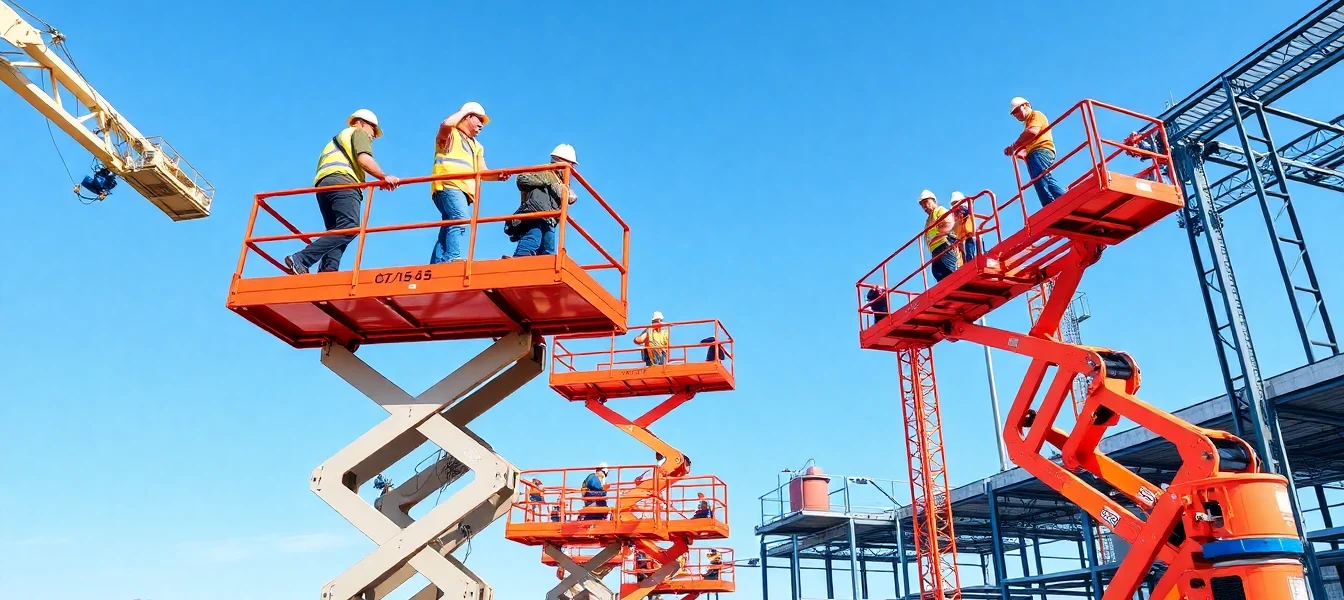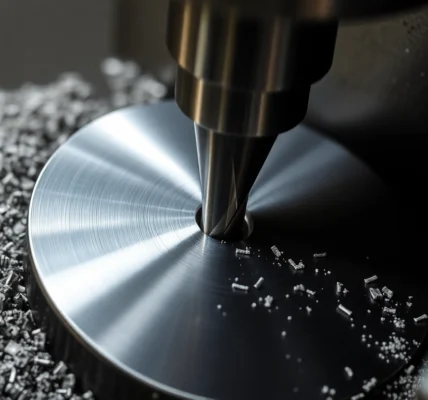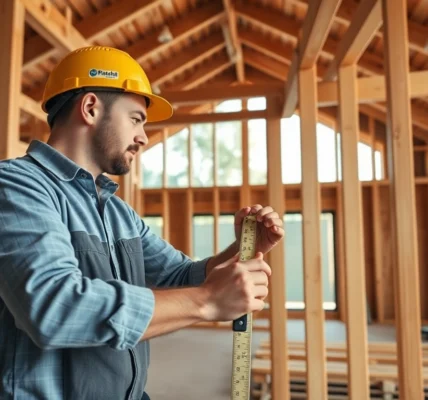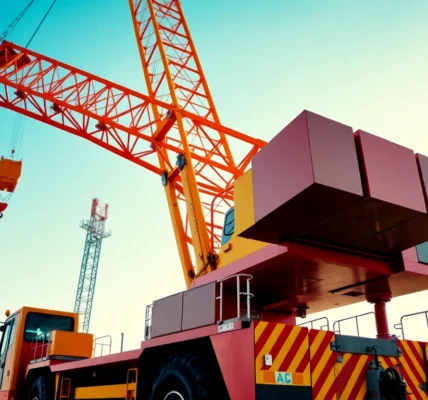Maximize Efficiency with Reliable Aerial Work Platforms Rental in the UK
Understanding Aerial Work Platforms and Their Applications
Aerial work platforms (AWPs) are essential equipment in the construction, maintenance, and industrial sectors, providing safe and efficient access to elevated work areas. Whether you’re a contractor, facility manager, or DIY enthusiast, understanding the different types of aerial platforms, their applications, and how to select the right equipment is critical for project success. With the increasing demand for flexible and cost-effective access solutions, aerial work platforms rental has become the preferred choice for many professionals in the UK so they can access the latest technology without the burdens of ownership.
Types of aerial work platforms available for rent
The market offers a diverse array of aerial work platforms to suit virtually all job requirements. Each type is designed with specific features, height capacities, terrains, and safety considerations in mind. The most common categories include:
- Scissor Lifts: Known for their stability and large platform capacity, scissor lifts are ideal for vertical, straight-up work. Perfect for indoor and outdoor applications, they are commonly used in maintenance, construction, and warehousing projects.
- Boom Lifts (Articulating and Telescopic): Offering greater maneuverability, boom lifts can reach over obstacles, making them suitable for complex tasks on uneven terrain. Articulating booms have multiple joints for versatility, while telescopic booms provide extended reach in a straight line.
- Vertical Personnel Lifts: Compact and easy to operate, vertical lifts excel in tight spaces and are suitable for maintenance, inspections, and light industrial tasks.
- Crawler and Spider Lifts: Equipped with mobility features for rugged terrain, these platforms are perfect for outdoor projects such as tree trimming, construction in difficult locations, or rescue operations.
- Lorry or Truck-Mounted Platforms: Mounted on vehicle chassis, these platforms are portable and ideal for rapid deployment in field service and utility work.
When considering rental options, it’s vital to assess the specific requirements of your project to choose the most suitable platform. Factors like height, load capacity, maneuverability, and terrain play crucial roles in this decision.
Common industries and tasks requiring aerial platforms
Aerial work platforms are versatile tools used across a broad spectrum of industries, including:
- Construction and Building: For tasks such as exterior façade work, window cleaning, and roof repairs, AWPs provide safe access to high elevations.
- Facilities Management and Maintenance: Indoor and outdoor maintenance tasks, including lighting installations, HVAC servicing, and infrastructure repairs.
- Telecommunications and Utilities: Utility inspections, installation, and maintenance often require specialized aerial platforms to reach difficult locations.
- Event Setup and Staging: For lighting, sound, and equipment setup at concerts or festivals, AWPs ensure efficiency and safety.
- Oil & Gas, Marine, and Offshore: In these sectors, rigorous safety and access standards make AWPs indispensable for inspections and repairs at height.
The ability to quickly and safely access elevated locations enhances productivity, reduces downtime, and mitigates risk, making aerial platforms integral to modern operational workflows.
Benefits of choosing rental over ownership
Opting for rental instead of purchasing aerial work platforms offers numerous advantages:
- Cost-Effectiveness: Renting eliminates high upfront costs, maintenance expenses, and storage requirements, allowing budgets to be allocated more efficiently.
- Access to Latest Technology: Rental companies regularly update their fleets, giving clients the opportunity to utilize newer, more reliable, and technologically advanced equipment.
- Flexibility: Rental durations can be tailored to project timelines, providing equipment only when needed.
- Reduced Depreciation and Storage Concerns: Ownership entails ongoing depreciation and storage, which can be avoided with rentals.
- Expert Support and Maintenance: Reputable rental firms offer maintenance, safety inspections, and operator training, ensuring equipment safety and operational efficiency.
These benefits collectively make equipment rentals a strategic choice for businesses seeking flexibility, safety, and efficiency without the long-term commitments of ownership.
How to Select the Right Aerial Work Platform for Your Project
Factors to consider: height, load capacity, terrain
Selecting the appropriate aerial work platform begins with a comprehensive understanding of your project’s specific requirements:
- Working Height: Determine the maximum height your personnel need to access. Always include a safety margin for reaching over obstacles or structural components.
- Load Capacity: Assess the weight of personnel, tools, and materials that will be on the platform simultaneously. Overloading can compromise safety and equipment integrity.
- Terrain Type: Indoor, smooth surfaces require different equipment than outdoor rough terrains. Crawler lifts or rough-terrain booms are suited for uneven grounds, whereas electric scissor lifts are ideal for clean, indoor environments.
- Space Constraints: Limited access areas demand compact or narrow platform options to navigate tight corners or confined spaces.
An effective initial assessment prevents costly mismatches, enhances safety, and optimizes project timelines.
Matching equipment types to specific job requirements
Once you identify the core factors, matching the right platform type becomes straightforward:
- High reach, complex maneuvering: Opt for articulating or telescopic boom lifts with extended reach and articulation for over-obstacle access.
- Repetitive, level tasks at moderate height: Use scissor lifts for stability and large working platforms.
- Indoor maintenance at various heights: Vertical personnel lifts or electric scissors are effective for confined indoor spaces.
- Outdoor uneven terrain: Rough-terrain boom lifts equipped with robust tires or crawler mechanisms provide stability and mobility.
Consulting with rental providers can further refine this matching process, leveraging their industry expertise for optimal selection.
Cost considerations and rental duration planning
Budgeting appropriately involves evaluating rental costs, which can vary based on platform type, duration, and additional services such as delivery or operator support. Typically, costs include:
- Base rental fee per day, week, or month
- Transport and delivery charges
- Setup and dismantling fees
- Operator charges, if applicable
- Insurance and safety certifications
To optimize expenses, plan your rental duration carefully, considering project phases and potential flexibility for extended use. Establishing clear communication with rental providers ensures accurate quotes and minimizes unexpected costs.
Best Practices for Safe and Effective Use of Aerial Platforms
Pre-operations safety checks and inspections
Safety is paramount when working at height. Before operation, conduct thorough inspections:
- Check for visible damages, leaks, or corrosion
- Verify safety rails and guardrails are intact
- Test control functions for responsiveness
- Ensure safety devices, such as alarms and emergency stop buttons, are operational
- Review the platform’s load capacity and ensure it matches the planned load
Document inspections and report any faults immediately. Regular pre-use checks mitigate risks and ensure compliance with safety standards.
Operator training and safety protocols
Proper training is critical for safe operation. Operators should be certified and familiar with manufacturer instructions and site-specific risks. Key protocols include:
- Wearing appropriate PPE (Personal Protective Equipment) such as helmets and harnesses
- Understanding the platform’s controls and emergency procedures
- Maintaining stable, level ground during operation
- Monitoring weather conditions and avoiding operation in high winds or storms
- Communicating clearly with team members and spotters
Continuous training and adherence to safety protocols significantly reduce accident risks and improve operational efficiency.
Maintenance tips to ensure longevity and safety
Routine maintenance is essential to keep aerial platforms in optimal condition:
- Follow manufacturer-recommended service schedules
- Keep hydraulic systems clean and free of debris
- Regularly check tire pressure and wear
- Replace worn safety features promptly
- Store equipment in secure, dry locations when not in use
Proper maintenance prolongs equipment lifespan, maintains safety standards, and minimizes downtime.
Innovations and Trends in Aerial Work Platform Rental
Latest technology and features in modern platforms
Technology advancements are shaping the future of aerial work platforms. Innovations include:
- Smart controls: Integrating IoT and telematics for real-time diagnostics, usage analytics, and predictive maintenance.
- Enhanced safety features: Automated stability controls, load sensors, and collision avoidance systems improve operator safety.
- Compact and foldable designs: Easier transportation and storage without compromising stability and reach.
- Electric and hybrid drives: Reducing emissions and noise, suitable for indoor use and eco-conscious projects.
Staying abreast of these developments enables businesses to leverage platforms that improve safety, efficiency, and sustainability.
Environmental considerations: electric and hybrid options
With increasing focus on environmental responsibility, rental companies now offer electric and hybrid AWPs. Benefits include:
- Zero exhaust emissions for indoor applications
- Lower noise levels, reducing disturbance in sensitive environments
- Compliance with stricter environmental regulations
- Cost savings on fuel and maintenance over time
As these options become more prevalent, choosing electric or hybrid platforms can enhance a company’s sustainability profile while maintaining operational effectiveness.
Market insights and rental trend forecasts in the UK
The UK aerial work platform rental market is experiencing steady growth driven by infrastructural development, urbanization, and the push towards safer, more efficient work at heights. Key trends include:
- Increased adoption of electric and hybrid models for environmental compliance
- Growing demand for compact, multifunctional platforms for urban projects
- Integration of smart technology for fleet management and safety oversight
- Expansion of rental services offering comprehensive packages, including operator training and maintenance
Market analysts forecast continued growth, emphasizing the importance for businesses to partner with reliable rental providers like Rentmas, leveraging their extensive fleet and industry expertise.
Booking and Managing Your Aerial Work Platform Rental
How to book equipment efficiently
Streamlining the rental process involves:
- Assessing your project’s specific requirements using guidelines provided by rental specialists
- Contacting reputable rental companies early to secure preferred equipment and schedule delivery
- Providing detailed site information to ensure compatibility and safety
- Clarifying rental terms, including charges, duration, and service support
Many suppliers, including Rentmas, offer online booking platforms that simplify this process, allowing project managers to reserve equipment swiftly and accurately.
Logistics and delivery options
Efficient logistics are vital to project timelines. Leading rental providers typically offer:
- Flexible delivery and pickup scheduling
- Transport packages tailored to equipment size and site location
- On-site setup, calibration, and safety checks
- Real-time tracking and communication during transportation
Proper coordination ensures equipment arrives on time, in good condition, and ready for immediate use.
Post-rental support and maintenance services
The rental experience extends beyond the initial booking. Reliable providers deliver ongoing support through:
- Regular maintenance and safety inspections
- Emergency troubleshooting and repairs
- Operator training refreshers and safety updates
- Flexible rental extensions or equipment swaps if project scopes change
This comprehensive approach minimizes downtime and ensures maximum safety and efficiency throughout your project.



